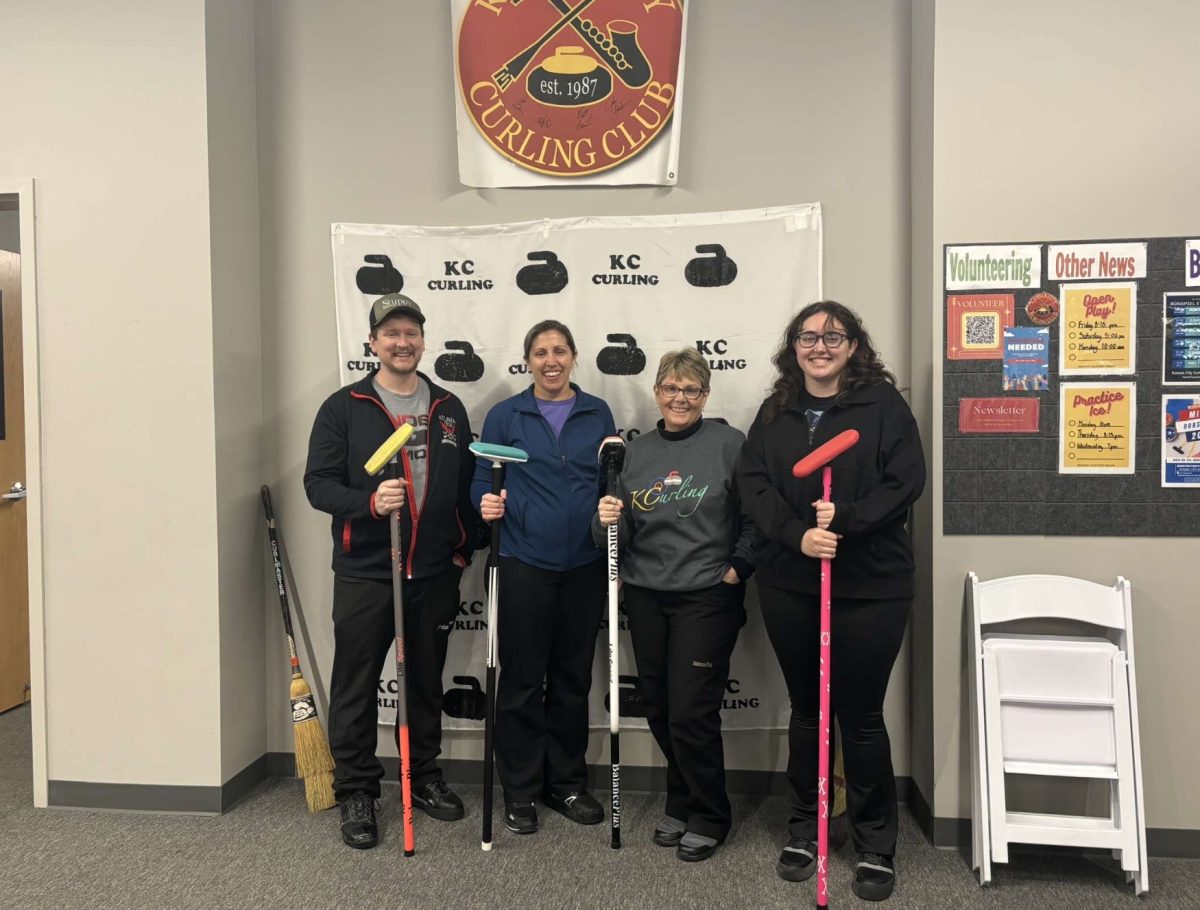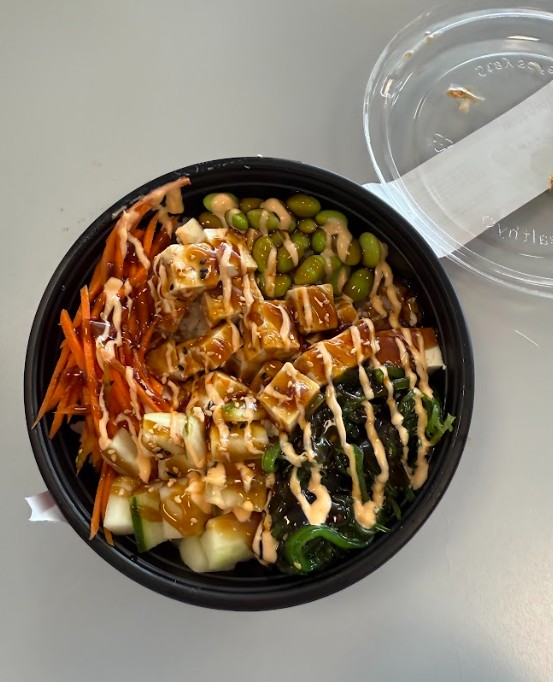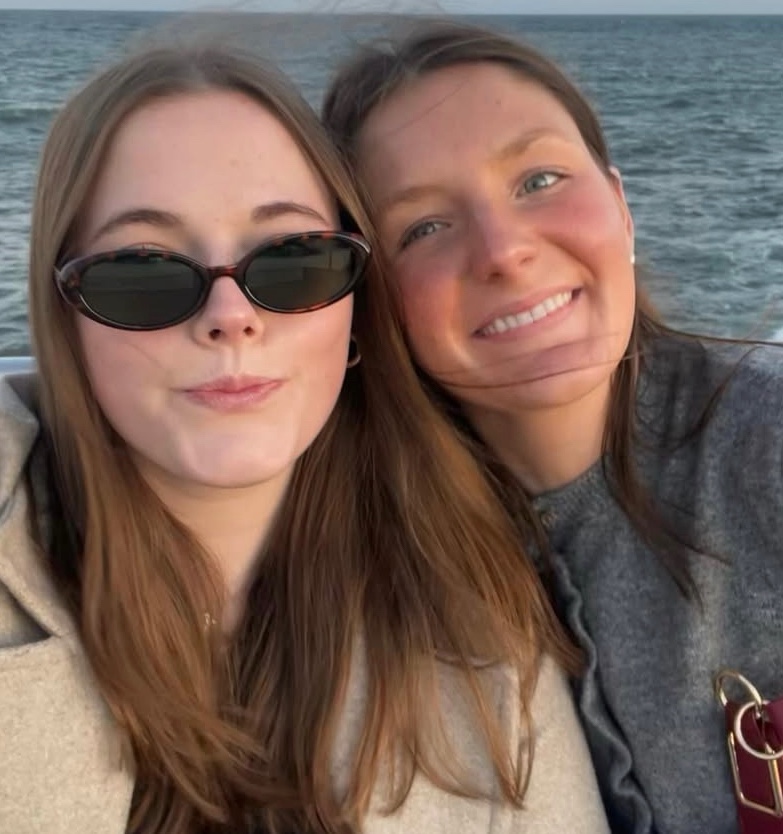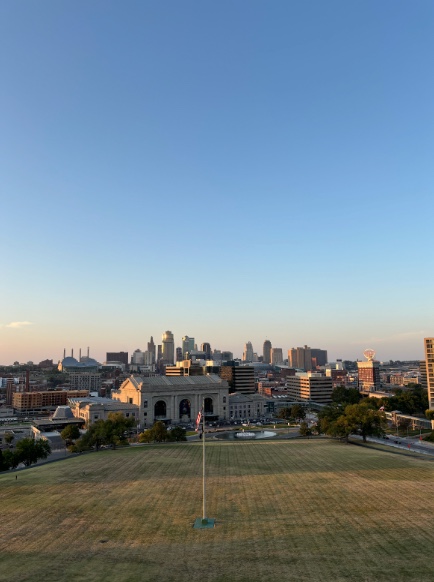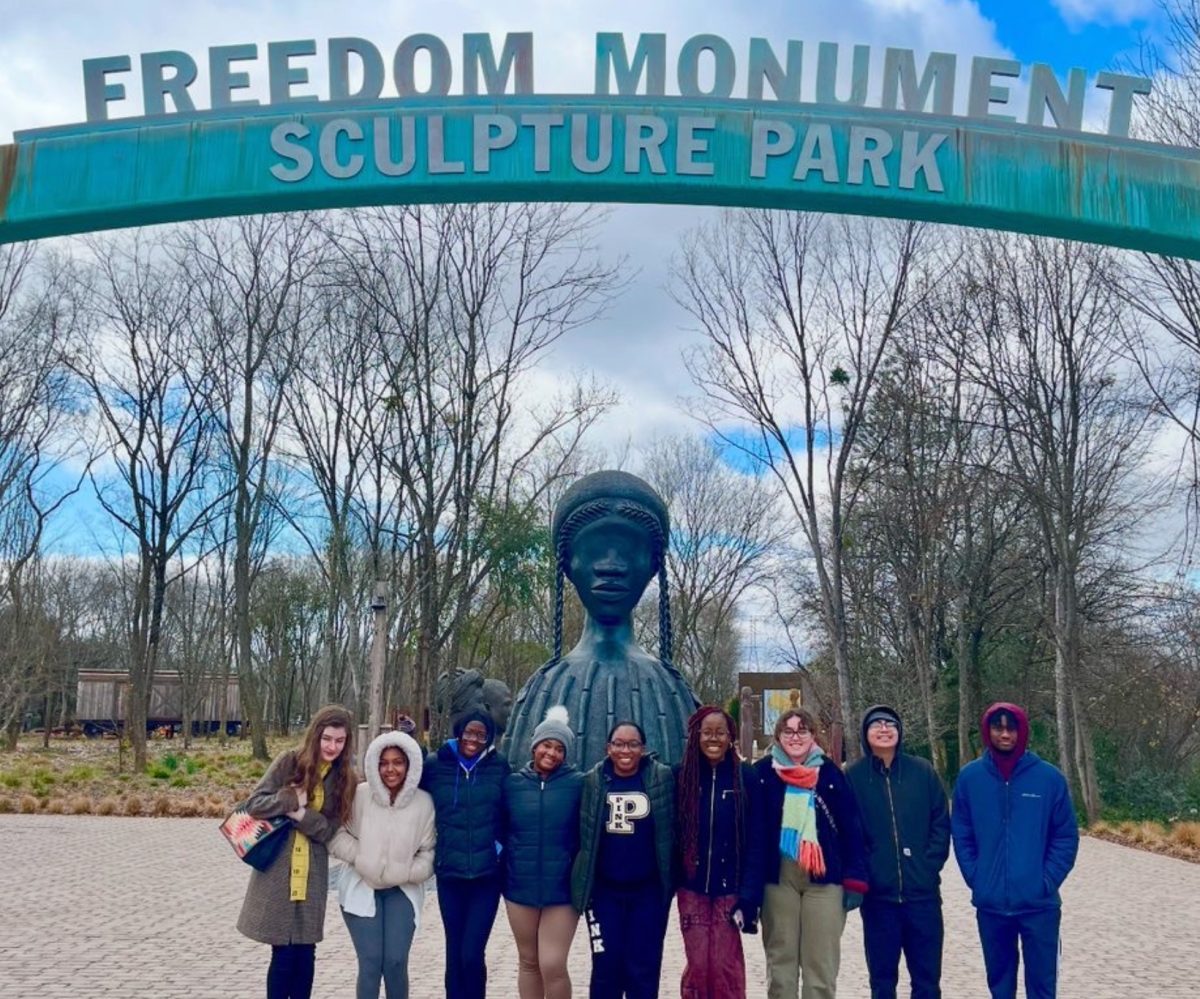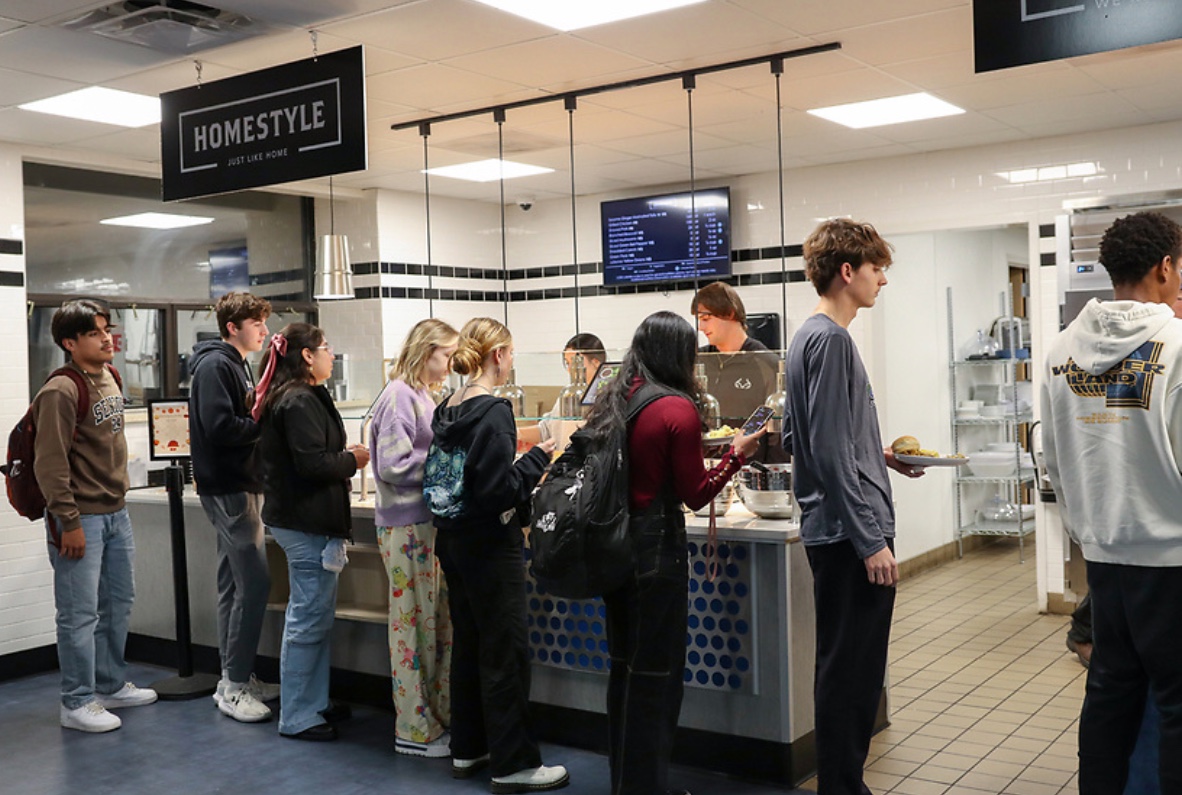As the spring semester nears its end, Rockhurst University’s seniors and upperclassmen are facing a challenge both uniquely personal and defining to themselves. For many, the completion of a capstone project is more than just a requirement to complete their degree, but rather functions as a course that demonstrates everything they have learned, how far they have come and where they are headed next.
Each student and their respective major’s capstone looks different. Some capstones take the form of research papers or lesson plans. Others occur in real-world settings: clinics, classrooms or weight rooms. However, all capstones demand resilience, creativity and self-direction. Capstone is designed as a turning point—a final academic test—that forces students to apply their learned skills in real-life scenarios, while reflecting on what they want to become.
Spanish Capstone
Junior Sofia Hughes, an international business and Spanish major, said her Spanish capstone involved both a 20-page paper and a 20- to 30-minute public presentation, delivered entirely in Spanish. Students were asked to examine an issue in a specific region, and Hughes’s connection to Argentina made the topic both meaningful and approachable.
“I’m talking about Argentina since I care a lot about that culture since half of my family is from there,” said Hughes.
Though the writing phase of the capstone was demanding, Hughes said the experience helped prepare her for her future. She plans to apply to law school after graduation.
“It has definitely prepared me for any graduate school research thesis or dissertation, as it’s a pretty independent project,” said Hughes. “It’s been a great way to practice my Spanish as well as research, reading and writing — crucial skills I’ll need since I plan on going to law school.”
English Capstone
For Chloe Fleming, a junior studying English and secondary education, her capstone project was about creating something she might actually use in her future classroom. Her English professors allowed her to complete a project that is applicable to both degrees.
“For my capstone, I’m creating a unit plan over Shakespeare’s ‘Romeo and Juliet,’” Fleming said. “This includes developing the larger plan of goals and their summative assessments, then creating each daily lesson plan and all the materials I would use when teaching this unit.”
While many of her English major peers wrote lengthy research papers or pursued creative writing projects, Fleming’s work focused on practical application.
“This capstone combines my experiences in English courses, as I have to read through the play, deconstruct it and then figure out how I can best teach it to 14-year-olds,” she said.
Fleming said the biggest challenge was deciding what students really needed to know.
“It was a real struggle for me to figure out how to begin the unit and what background knowledge was actually important and useful for their reading,” she said.
Still, she found the project valuable for both her academic and professional growth. Fleming will complete her secondary education capstone in the next academic year and hopes to use what she created in her English project as a foundation for that or in her future career.
“I think my capstone has been very helpful in preparing me for my future in teaching,” Fleming said. “There’s a good chance I’ll be able to use some of the material I’m generating in my classroom, which definitely makes this project more valuable to me.”
Biology Capstone
McKenna Smith, a junior biology major, worked with a small group to present on a topic in developmental biology.
“Our paper and presentation were about the BRCA1 gene that impacts breast cancer,” Smith said.
As part of the biology capstone, students read a paper on their chosen topic, discussed it with classmates and answered questions afterward. For Smith, the experience made her academic knowledge feel more applicable.
“It combined everything I’ve already learned into real-life topics,” she said. “I think reading 30-page papers helped me better prepare for medical school when it comes to dissecting and annotating large volumes of content.”
Exercise Science Capstone
In the exercise science program, senior Brandon Hebrank found himself far from a traditional lecture hall for his capstone.
“I’m completing an internship-like experience in the Rockhurst athletic weight room,” said Hebrank. “I took more of the personal training and strength and conditioning route, versus the majority of my classmates who are in physical therapy clinics or other off-campus clinics.”
Hebrank said his biggest challenge was personal growth.
“The main challenge for me has been stepping out of my comfort zone and learning to be loud and have the ability to lead warmups and workouts,” said Hebrank.
The hands-on experience aligned directly with his future career goals.
“I hope to be a personal trainer in the near future as I’m wrapping up my certification,” said Hebrank. “This experience has taught me a lot about working with clients, planning workouts and training athletes with injuries.”
Communication Capstone
For Maria Smith, a senior majoring in communication and political science, the communication capstone took the form of a highly involved research project.
“We have to partner with a nonprofit, observe and recommend different strategies to help them with their communications problems,” said Smith.
Smith chose the Kansas City Curling Club, a nonprofit she already works closely with in her everyday life. While her existing connection gave her a head start, she noted that others in her class struggled to make that initial contact.
“I’ve seen some of my peers struggle with trying to find and work with their organizations,” said Smith.
The biggest challenge for Smith was managing her time.
“With having to observe, analyze and write, it’s turned out to be quite the time commitment,” said Smith.
Still, she said the project has been a valuable learning experience.
“This capstone has definitely let me flex my communications knowledge,” said Smith. “It also has given me a lot of insight into the inner workings of nonprofits and what the business and administrative sides of them really look like.”
Business Administration Capstone
Cara Super, a senior majoring in business administration with concentrations in marketing analytics and accounting, approached her capstone through a group presentation.
“We recently just started on it, but so far, just picking a topic was a little challenging since there was so much we could choose from related to accounting,” said Super.
Her group prioritized clarity and relevance in their topic selection.
“We wanted to make sure to pick a topic that was specific enough to create a concise presentation on the information,” said Super.
The capstone included presenting to professors and industry professionals, which added both pressure and valuable experience.
“My capstone is also giving good experience with presentation skills, especially in front of business officials,” said Super. “It will prepare me for giving presentations to future bosses and executives.”
Nursing Capstone
In the school of nursing, senior Marianna Magee took her capstone course in the operating room.
“My capstone is completing 132 clinical hours in the operating room at Overland Park Regional,” said Magee.
While nursing capstones vary based on student placement, most align with students’ post-graduation plans, making each experience distinct. For Magee, the challenge was the independence of the placement.
“It has been challenging because it’s more independent than prior clinical experiences,” said Magee.
She also noted how different the operating room is from what she had learned in nursing school.
“It is also difficult because the operating room is so different from any type of content that we learn in nursing school,” said Magee.
However, Magee found the experience directly impactful.
“It has been very helpful in preparing me for my future because I have accepted a job on that unit after I graduate,” said Magee. “It has helped me get more comfortable—almost like a pre-orientation orientation type of thing.”
Criminial Justice Capstone
For junior criminal justice major Gracie Rooney, the capstone involved more than just a paper and presentation. It gave her the chance to influence a wrongfully convicted individual’s life. Rooney’s capstone work is with the Midwest Innocence Project (MIP), a nonprofit organization that investigates and works to overturn wrongful convictions.
Rooney collaborates with peers to investigate the innocence of a convicted individual and develops a presentation to the MIP laying out the findings.
“The capstone has shown me how sometimes the work I will likely do in my future career in law may be difficult or unexpected,” said Rooney. “But focusing on the bigger picture and the impact it can have on a person’s well-being is all that truly matters.”
Finance Capstone
Junior Jenna Totta, majoring in corporate accounting and finance, is tackling her finance capstone through a high-stakes simulation. Totta’s group must either create a new company or enhance an existing one with an imagined $50 million investment, including full financials and a marketing strategy.
“It’s been a great way to apply everything I’ve learned throughout my time at Rockhurst to a real business scenario,” said Totta.
The biggest challenge has not been the numbers but managing her team.
“Time management with my group mates has been the hardest part,” said Totta.
Still, the experience has offered valuable professional preparation.
“Guest speakers throughout the semester have provided some great insights and advice for entering the corporate world,” said Totta.
From classrooms to hospitals, Rockhurst’s capstones reflect more than just final projects for upperclassmen. They show growth in each individual. Each student faces a new challenge and leaves more prepared, confident and certain of what comes next. The capstone may be a requirement, but for many of these students, something larger has been achieved: a defining moment in their academics and a glimpse into the professionals they are becoming.


